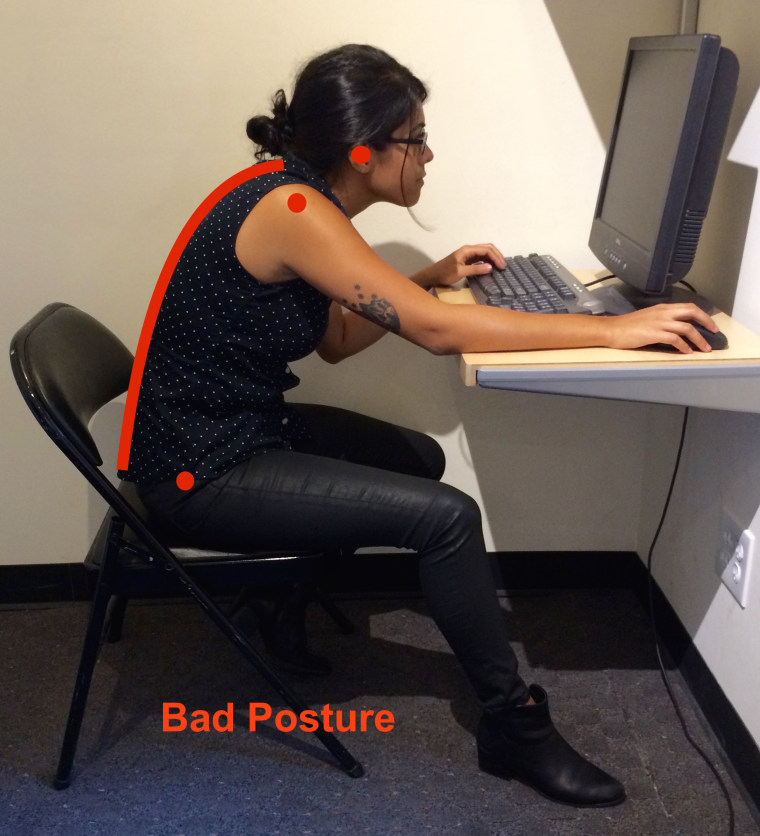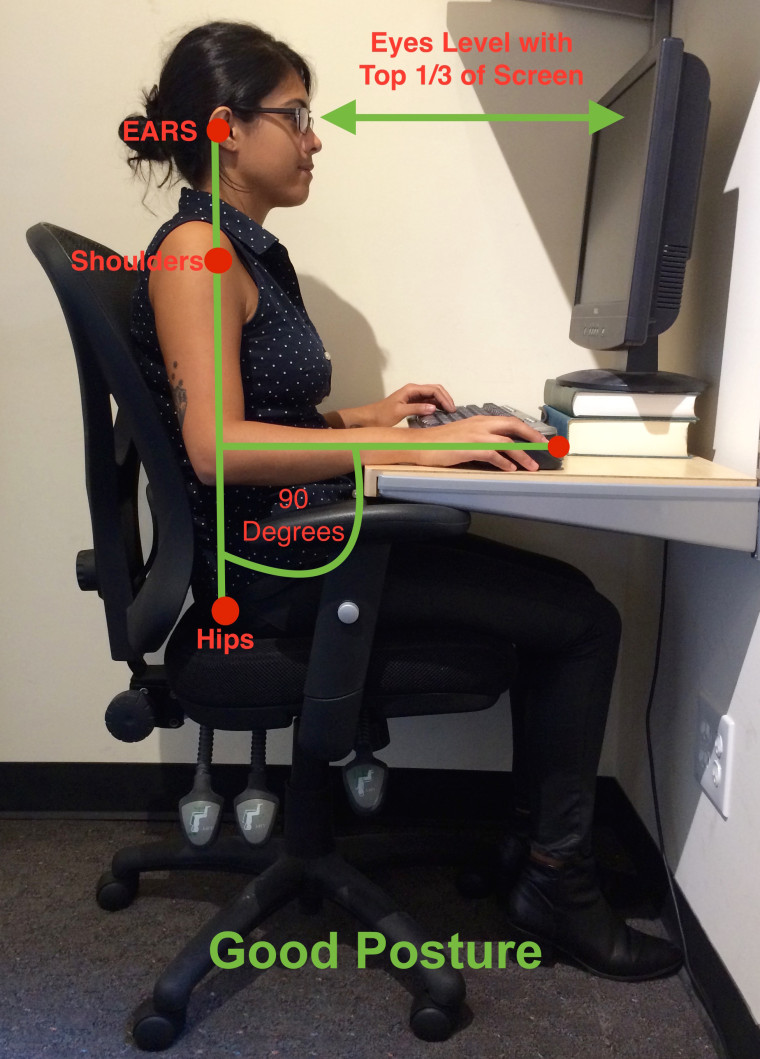Sure, sitting at a desk all day can be stressful and boring. But those long hours can also lead to serious health problems, not to mention a bad case of "office bod."
"Office bod" is that slouching desk position, with a soft midsection and thighs spread open. It may not be new, but as we spend more time in front of our computers or hunched over our mobile devices, our posture and backs are suffering more than ever.
And this problem has only been exacerbated by the pandemic keeping many of us working from home in makeshift office spaces (or on the couch).
Some chiropractors are reporting an increasingly common condition called "forward head posture" — where the head moves forward in front of the shoulders, stressing the muscles and discs in the neck and upper back.
"This has become an epidemic in our society because of the technology we now use," chiropractor and ergonomic expert Dr. Jordan Wolff of Sutton Place Chiropractic in New York told TODAY. "Poor posture leads to pain in many areas of the body including, neck, mid back, low back, shoulder, jaw, digestive issues and headaches."
We all know sitting is the new smoking, raising our risk of diabetes, heart disease and obesity. A recent American Cancer Society study found that women who spend six hours or more of free time sitting per day have a 10 percent greater risk of getting cancer than women who spend fewer than three hours sitting per day.
But even in the short term, sitting all day slumped over our desks can affect our happiness and daily mood.
"Usually, poor posture leads to a hunched-over position, reducing lung capacity," says Wolff. "If we're slumping, we're likely not breathing deeply and may be susceptible to fatigue."
Sitting in a collapsed, helpless position (like the exhausted afternoon slump) prompted negative thoughts and memories, while sitting in an upright, powerful position encouraged empowering thoughts and memories, psychologist Erik Peper of San Francisco State University found in a series of 2012 experiments with college students.
"Embodied cognition, the idea that the mind-body relationship is one that runs both ways, supports the notion that changing your posture can change your mood," said Janice Novak, author of "Posture, Get It Straight!"
And don't expect a standing desk to solve all your problems — even if you're one of the lucky few to have one. Standing all day is tiring and can cause stress to the legs and feet. And studies thus far show minimal impact of standing workstations on improving discomfort and posture.
So, if standing isn't the solution and our desks are causing us both physical and emotional pain, how can we counteract the negative effects?
Get up and move twice an hour
"If you work at a desk, stand and move around 1-3 minutes every half hour during the day," said Novak. "Whenever you can stand, do so. Standing burns 20 percent more calories than sitting."
Regular motion can be a simple stretch for just 10 seconds, recommended Steven Conway, spokesperson for the American Chiropractic Association.
- Stand up
- Take a big breath
- Arch your chest forward and move your head so you are looking at the ceiling.
"This position is the exact opposite of the hunched over office bod position and will work to counter the extended forward positions [of] office work," said Conway.
Practice good posture when you're sitting

Bad posture
Look familiar? In this image, "the head is forward straining the neck muscles. You can also see the arm is stretched out reaching for the mouse," said Wolff.

Good posture
"[With] good posture, you can see the back is straight and supported by a proper chair," said Wolff.
As you sit at your desk, aim for this posture:
- The ears, shoulders and hips are properly inline.
- The elbow is bent to 90 degrees, as to reduce stress on the arms and shoulders.
- Head is upright allowing the neck to be stress free.
- The eyes are level with the top one-third of the computer screen.
To avoid the spine slump, the center of your computer screen should be roughly at chin level.
"[You] will feel much more comfortable throughout the day, leading to more energy, better mood and more productivity," said Wolff.



